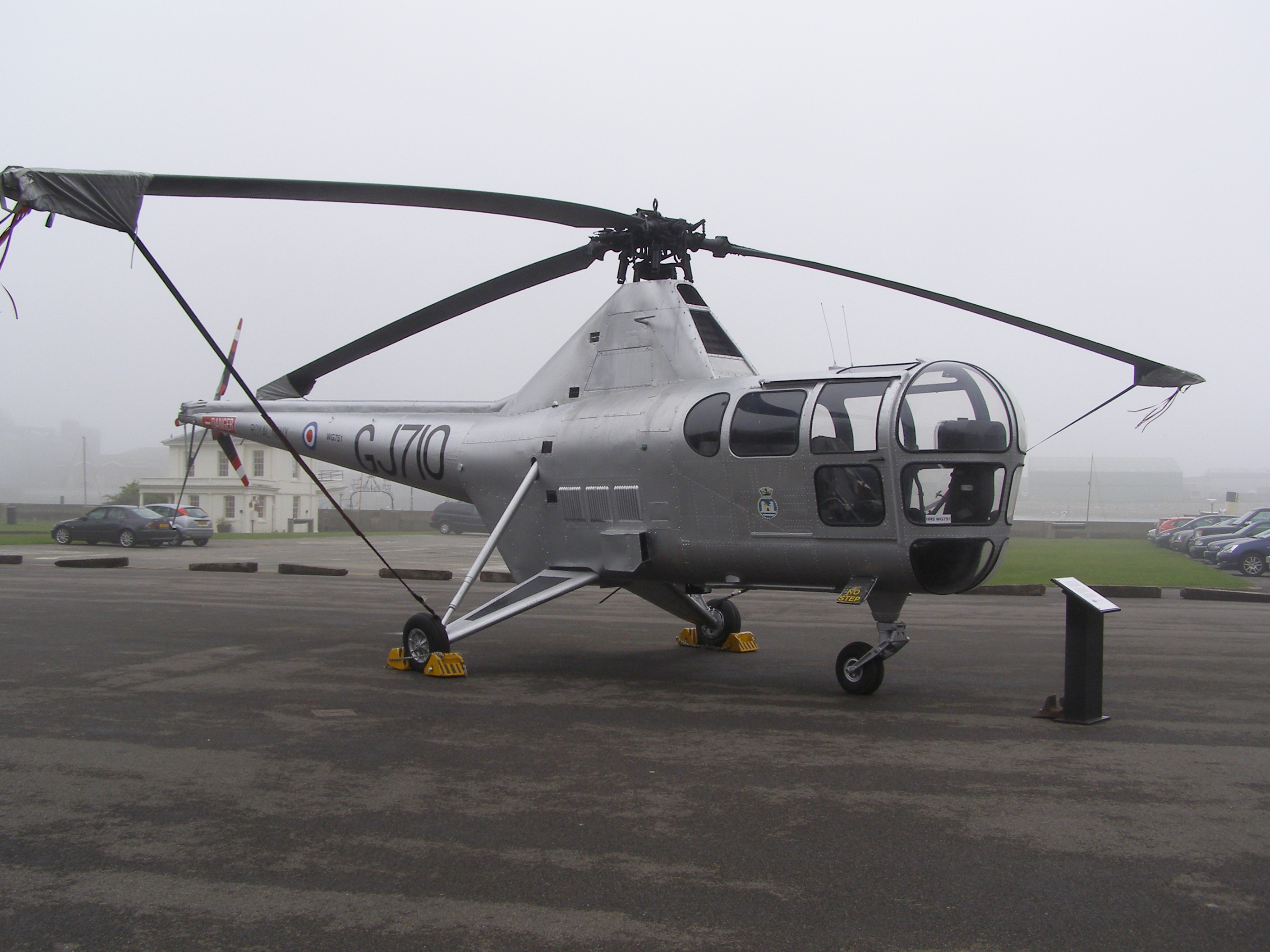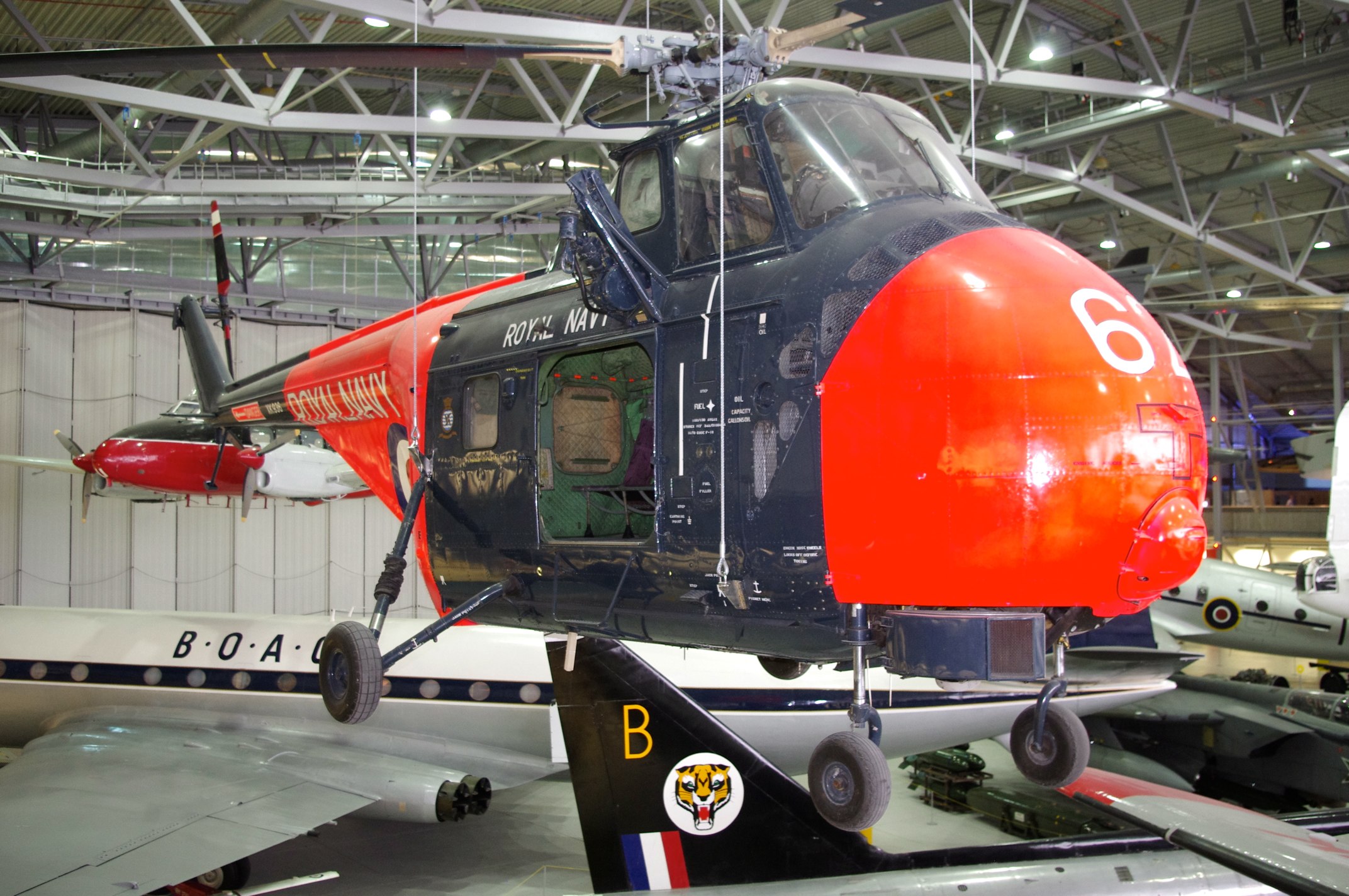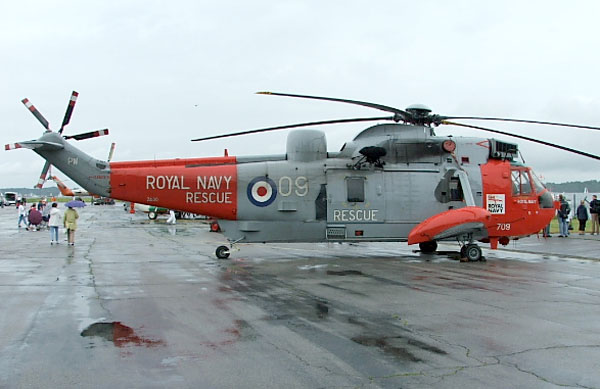History Of Royal Navy Helicopter Search And Rescue on:
[Wikipedia]
[Google]
[Amazon]
The History of Royal Navy Helicopter Search and Rescue has its roots in the adoption by the

 * RNAS Anthorn (HMS ''Nuthatch'')
* RNAS Brawdy (HMS ''Goldcrest'')
* RNAS Culdrose (HMS ''Seahawk'')
*
* RNAS Anthorn (HMS ''Nuthatch'')
* RNAS Brawdy (HMS ''Goldcrest'')
* RNAS Culdrose (HMS ''Seahawk'')
*

 The replacement of the Dragonfly and Whirlwind in the Royal Navy with the
The replacement of the Dragonfly and Whirlwind in the Royal Navy with the
Royal Navy SAR 60 Website
Sea rescue in the United Kingdom History of the Royal Navy
Royal Navy
The Royal Navy (RN) is the United Kingdom's naval warfare force. Although warships were used by English and Scottish kings from the early medieval period, the first major maritime engagements were fought in the Hundred Years' War against F ...
of helicopters in the plane guard
A plane guard is a warship (commonly a destroyer or frigate) or helicopter tasked to recover the aircrew of planes or helicopters which ditch or crash in the water during aircraft carrier flight operations.
Ships
For ships, the plane guard is po ...
role. From a purely military tasking Royal Navy squadrons came to share the provision of search and rescue
Search and rescue (SAR) is the search for and provision of aid to people who are in distress or imminent danger. The general field of search and rescue includes many specialty sub-fields, typically determined by the type of terrain the search ...
SAR coverage for the United Kingdom
The United Kingdom of Great Britain and Northern Ireland, commonly known as the United Kingdom (UK) or Britain, is a country in Europe, off the north-western coast of the continental mainland. It comprises England, Scotland, Wales and North ...
with the Royal Air Force
The Royal Air Force (RAF) is the United Kingdom's air and space force. It was formed towards the end of the First World War on 1 April 1918, becoming the first independent air force in the world, by regrouping the Royal Flying Corps (RFC) and ...
and commercial providers under contract to Her Majesty's Coastguard
His Majesty's Coastguard (HMCG) is a section of the Maritime and Coastguard Agency responsible, through the Secretary of State for Transport to Parliament, for the initiation and co-ordination of all maritime search and rescue (SAR) within the ...
, being responsible for two sectors out of twelve. From 2015 both the RAF and the Navy will surrender the civilian SAR role to contractors operating on behalf of the Coastguard.
Early SAR
Royal Navy Search and Rescue had been conducted by helicopters at sea since their introduction on warships. It was decided in 1953 to provide a dedicated helicopter Search and Rescue capability for downedFleet Air Arm
The Fleet Air Arm (FAA) is one of the five fighting arms of the Royal Navy and is responsible for the delivery of naval air power both from land and at sea. The Fleet Air Arm operates the F-35 Lightning II for maritime strike, the AW159 Wil ...
pilots from their home shore establishments. The first Royal Navy Air Stations to stand up their SAR units in 1953 were:

 * RNAS Anthorn (HMS ''Nuthatch'')
* RNAS Brawdy (HMS ''Goldcrest'')
* RNAS Culdrose (HMS ''Seahawk'')
*
* RNAS Anthorn (HMS ''Nuthatch'')
* RNAS Brawdy (HMS ''Goldcrest'')
* RNAS Culdrose (HMS ''Seahawk'')
* RNAS Eglinton (HMS Gannet)
Royal Naval Air Station Eglinton or RNAS Eglinton was a Royal Naval Air Station located north east of Eglinton, County Londonderry, Northern Ireland. It opened as a Royal Air Force Station (RAF Eglinton) in 1941, before being transferred to the ...
* RNAS Ford (HMS ''Peregrine'')
* RNAS Gosport (HMS ''Siskin'')
* RNAS Lossiemouth (HMS ''Fulmar'')
The Westland Dragonfly
The Westland WS-51 Dragonfly helicopter was built by Westland Aircraft and was an Anglicised licence-built version of the American Sikorsky S-51.
Design and development
On 19 January 1947 an agreement was signed between Westland Aircraft a ...
would remain in service in the SAR role with the Royal Navy, alongside the Westland Whirlwind Westland or Westlands may refer to:
Places
*Westlands, an affluent neighbourhood in the city of Nairobi, Kenya
* Westlands, Staffordshire, a suburban area and ward in Newcastle-under-Lyme
*Westland, a peninsula of the Shetland Mainland near Vaila, ...
, until 1964. The Whirlwind had a greater range of 300 nmi and was faster with a maximum airspeed
In aviation, airspeed is the speed of an aircraft relative to the air. Among the common conventions for qualifying airspeed are:
* Indicated airspeed ("IAS"), what is read on an airspeed gauge connected to a Pitot-static system;
* Calibrated a ...
of 95 kn. More complicated rescues would also be undertaken by the Whirlwinds with their increased crew size and rescue capabilities. The Whirlwind HAR.5 had space to rescue 8 people.
East Anglia and Netherlands Flooding 1953
An urgent request for help was given to the Royal Navy after the extensive North Sea flooding ofEast Anglia
East Anglia is an area in the East of England, often defined as including the counties of Norfolk, Suffolk and Cambridgeshire. The name derives from the Anglo-Saxon kingdom of the East Angles, a people whose name originated in Anglia, in ...
and the Netherlands
)
, anthem = ( en, "William of Nassau")
, image_map =
, map_caption =
, subdivision_type = Sovereign state
, subdivision_name = Kingdom of the Netherlands
, established_title = Before independence
, established_date = Spanish Netherl ...
on the night of 31 January 1953. 12 Dragonfly HR.1 and HR.3 helicopters were dispatched from 705 Naval Air Squadron
705 Naval Air Squadron was first formed as a flight in 1936 from No 447 Flight Royal Air Force and operated Swordfish torpedo bombers from battlecruisers. It achieved squadron status in 1939 before being disbanded in 1940. The squadron was re-form ...
from their base at RNAS Gosport (HMS Siskin). During the 7 hours flying in response to the floods 840 people were rescued; one single pilot was responsible for 111 of these, and another for 102.
For the life-saving efforts the Commanding Officer
The commanding officer (CO) or sometimes, if the incumbent is a general officer, commanding general (CG), is the officer in command of a military unit. The commanding officer has ultimate authority over the unit, and is usually given wide latitu ...
, Lt Cdr HR Spedding, was awarded the MBE Mbe may refer to:
* Mbé, a town in the Republic of the Congo
* Mbe Mountains Community Forest, in Nigeria
* Mbe language, a language of Nigeria
* Mbe' language, language of Cameroon
* ''mbe'', ISO 639 code for the extinct Molala language
Molal ...
and Aircrewman IS Craig the British Empire Medal
The British Empire Medal (BEM; formerly British Empire Medal for Meritorious Service) is a British and Commonwealth award for meritorious civil or military service worthy of recognition by the Crown. The current honour was created in 1922 to ...
.
Later years
 The replacement of the Dragonfly and Whirlwind in the Royal Navy with the
The replacement of the Dragonfly and Whirlwind in the Royal Navy with the Westland Wessex
The Westland Wessex is a British-built turbine-powered development of the Sikorsky H-34 (in US service known as Choctaw). It was developed and produced under licence by Westland Aircraft (later Westland Helicopters). One of the main changes ...
in 1964 led to a greater maximum range of 478 nmi for these SAR units. The Wessex had a greater maximum airspeed of 115 kn and space to rescue 16 people. These aircraft were used to save the lives of two SAS
SAS or Sas may refer to:
Arts, entertainment, and media
* ''SAS'' (novel series), a French book series by Gérard de Villiers
* ''Shimmer and Shine'', an American animated children's television series
* Southern All Stars, a Japanese rock ba ...
canoeists who found themselves in difficulty off the South Wales coast on 18 March 1963. The pilot, Lt. R.E. Smith, was awarded an MBE for his actions during this rescue. (This rescue was not undertaken by SAR dedicated crew, but a Commando Role crew. All Royal Navy aircrew are trained in search and rescue techniques). A Wessex HAS.1 of 706 Naval Air Squadron
706 Naval Air Squadron (706 NAS) was a Naval Air Squadron of the Royal Navy's Fleet Air Arm. Established as a fighter and torpedo-bomber training unit in Australia at the end of World War Two, it was briefly reformed as a helicopter squadron in th ...
was used to rescue a lighthouse keeper from Longships Lighthouse
Longships Lighthouse is an active 19th-century lighthouse about off the coast of Land's End in Cornwall, England. It is the second lighthouse to be built on Carn Bras, the highest of the Longships islets which rises above high water level. I ...
off Lands End in 1968. The pilot, Lt. D. Blythe, was awarded the MBE for this rescue.
The Wessex fleet was complemented in 1969 by the introduction of the Westland Sea King
The Westland WS-61 Sea King is a British licence-built version of the American Sikorsky S-61 helicopter of the same name, built by Westland Helicopters. The aircraft differs considerably from the American version, with Rolls-Royce Gnome engin ...
to Fleet Air Arm (FAA) service. The Wessex continued to provide SAR with the Sea King in its intended role as an ASW helicopter throughout the FAA. The Sea King was called upon for more distant SAR call-outs due to its increased range of 598 nmi and greater endurance of over 4 hours. One of the new Sea King aircraft from RNAS Culdrose was involved in the daring rescue of the crew from the Danish SS Merc Enterprise which had capsized in heavy seas south of Plymouth in January 1974. With waves of 50 feet and severe winds of 70 mph, the crew managed to save many of the survivors with the pilots, Lt Cdr DS Mallock and Lt AR Baker being awarded the Air Force Cross. The aircrew, POAcmn DJD Fowles; POAcmn DJ Jackson and APOAcmn AT Williams, were each awarded the Air Force Medal
The Air Force Medal (AFM) was a military decoration, awarded to personnel of the Royal Air Force and other British Armed Forces, and formerly to personnel of other Commonwealth countries, below commissioned rank, for "an act or acts of valour ...
.
The capable pairing of Wessex and Sea King were directly responsible for increasing the number of rescues during this period. The Sea King's increased rescue capacity also led to an increase in the number of gallantry awards given to the SAR crews.
The introduction of the Sea King Mk.5, specifically for SAR in April 1988, was another step-change in capability for RN SAR. Sea King HAS.5s were stripped of their ASW equipment to enable them to carry even more fuel for long range rescue missions. With an almost empty cabin area the HAR.5s had plenty of space for specialist rescue equipment, medical equipment and increased passenger space; this aircraft was the backbone of the Royal Navy SAR fleet until 2015, when the service was privatised.
Until 2015, Royal Navy SAR service was provided by two different squadrons: 771 Naval Air Squadron
771 Naval Air Squadron of the Fleet Air Arm was formed on 24 May 1939 at Lee-on-Solent as a Fleet Requirements Unit with 14 Fairey Swordfish TSR biplanes. The Squadron carried out various exercises with ships and provided towed targets for naval a ...
and Gannet SAR Flight based at RNAS Culdrose (HMS Seahawk)
Royal Naval Air Station Culdrose (RNAS Culdrose, also known as HMS ''Seahawk''; ICAO: EGDR) is a Royal Navy airbase near Helston on the Lizard Peninsula of Cornwall UK, and is one of the largest helicopter bases in Europe. Its main role is ser ...
and Prestwick (HMS Gannet) respectively.
Units
*705 Naval Air Squadron
705 Naval Air Squadron was first formed as a flight in 1936 from No 447 Flight Royal Air Force and operated Swordfish torpedo bombers from battlecruisers. It achieved squadron status in 1939 before being disbanded in 1940. The squadron was re-form ...
(1953-1974)
* 771 Naval Air Squadron
771 Naval Air Squadron of the Fleet Air Arm was formed on 24 May 1939 at Lee-on-Solent as a Fleet Requirements Unit with 14 Fairey Swordfish TSR biplanes. The Squadron carried out various exercises with ships and provided towed targets for naval a ...
(1961-2015)
* HMS Gannet SAR Flight
HMS ''Gannet'' is a forward operating base of the Royal Navy's Fleet Air Arm located at Glasgow Prestwick Airport, South Ayrshire in Scotland.
The facility was previously also known as Royal Naval Air Station (RNAS) Prestwick before it was d ...
(2001-2015)
* 772 Naval Air Squadron
772 Naval Air Squadron (772 NAS) was a Naval Air Squadron of the Royal Navy's Fleet Air Arm.
History
The squadron was created as a Fleet Requirements Unit on 28 September 1939, from flight 'X' of 771 Naval Air Squadron, which up to that mome ...
(1974-1995)
* 819 Naval Air Squadron
819 Naval Air Squadron (819 NAS) was a Naval Air Squadron of the Royal Navy's Fleet Air Arm.
History
Along with No. 815 Squadron, it performed the successful night attack on the Italian fleet at Taranto on 11 November 1940. The attack was perfo ...
(1971-2001)
Future
In March 2013 the Department for Transport announced that it had a signed a contract with Bristow Helicopters Ltd to provide search and rescue helicopter services in the UK with operations will commencing progressively from 2015. The new service is expected to be fully operational across the United Kingdom by summer 2017 and will utilizeAgustaWestland AW189
The AgustaWestland AW189 is a twin-engined, super-medium-lift helicopter manufactured by Leonardo S.p.A. It is derived from the AW149, and shares similarities with the AW139 and AW169.
Development
On 20 June 2011, development of the eight-tonn ...
and Sikorsky S-92
The Sikorsky S-92 is an American twin-engine medium-lift helicopter built by Sikorsky Aircraft
Sikorsky Aircraft is an American aircraft manufacturer based in Stratford, Connecticut. It was established by aviation pioneer Igor Sikorsky in 1 ...
based at ten locations around the UK.
See also
*RAF Search and Rescue Force
The Royal Air Force Search and Rescue Force (SARF or SAR Force) was the Royal Air Force organisation which provided around-the-clock aeronautical search and rescue cover in the United Kingdom, Cyprus and the Falkland Islands, from 1986 until 201 ...
* Royal Navy SAR 60
Royal Navy Search and Rescue 60 was a series of events throughout 2013 to mark the 60th anniversary of the creation of the first helicopter unit within the Royal Navy with a search and rescue role.
Events started on 12 January with the launc ...
References
{{reflistExternal links
Royal Navy SAR 60 Website
Sea rescue in the United Kingdom History of the Royal Navy